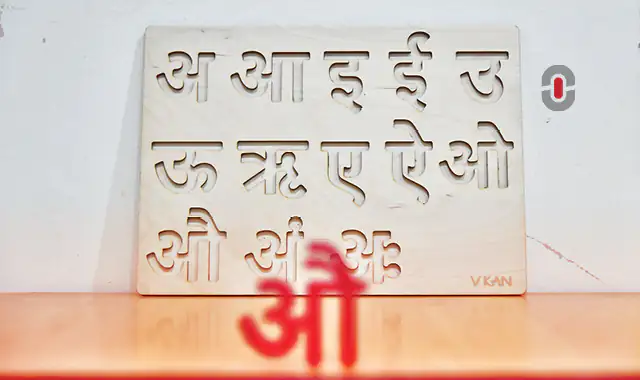An interesting fact about Hindi is that it is a language spoken in numerous countries other than India.
While there are around 584.57 million native speakers and the language is primarily spoken in India, other locations where it’s spoken either as a mother tongue or second language include Fiji, Mauritius, Trinidad, Guyana, Tobago, Suriname, and Nepal.
This incredible number of speakers and the rise in audio-visual translation (AVT) means that there’s a growing need for Hindi video subtitling, both to and from Hindi. The purpose of this is to ensure that audiences have greater exposure and enjoy more comfort when consuming video content.
However, this can pose numerous challenges. That’s exactly what we explore in this article. Keep reading to find out more!
Challenges in subtitling for Hindi
There are numerous challenges when it comes to Hindi video subtitling that should be addressed when it comes to AVT—both from foreign languages into Hindi and from Hindi into other target languages. Among these challenges are the following:
1. Culture Specific Items (CSI)
Culture Specific Items (CSI) are the first major obstacle when it comes to Hindi video subtitling. The main challenge is the fact that many viewers of Hindi films may not have any background, context, or cultural understanding when it comes to an accurate translation.
Examples include food items that are specific to India, clothing, festivals, and more. Although these items can be quite culture specific, some authors have suggested that translations stick to more generic word usage so that the primary and not the precise meaning is conveyed for greater understanding by the audience.
2. Forms of greetings
The second major obstacle that arises with Hindi video subtitling relates to the forms of greetings. In certain Hindi films, some greetings can be construed in multiple ways. For example, a greeting such as “May Rama be with you” could be used both as a form of greeting and a form of goodbye.
Thus, it is essential that such elements receive their intended translated meaning through translations by using equivalents in the target language such as “good day”, “hi/hello”, and “goodbye”, among others.
3. Rhetorical devices
Aspects such as sayings, proverbs, and idioms are also incredibly challenging to translate from one culture to the next with regard to Hindi video subtitling. These forms of expression often have no direct translation. Furthermore, and apart from this, translators and localization experts must be aware of the intended meaning behind the rhetorical device and attempt to convey it in a form that will be understood by the target audience.
4. Culture-specific concepts
There are also the culture-specific concepts that can be a challenge to translate when it comes to Hindi video subtitling. These can include aspects such as flora, fauna, food, clothes, housing, work, leisure, politics, law, and religion, among others.
When attempting to translate or localize these concepts to a foreign target audience, Hindi video subtitling has a dual challenge of time and space limitations on screen. This means that subtitling for Hindi will need to consider character limits, timing, and readability factors with regard to accuracy when conveying speech via text on the screen.
5. Language variety and language-specific characteristics
Hindi video subtitling is furthermore plagued by challenges related to language variety and language specific characteristics. Among these are the following:

- Different sources of vocabulary: because Hindi is spoken in many different countries, it’s only natural that new vocabularies will emerge in different regions. What’s more, is the adoption of new words in the Hindi vocabulary from other linguistic influences. For example, there are influences from Sanskrit, Urdu, and even Persian influences that must be factored in by linguists.
- The script followed: the Hindi script is Devanagari. A unique element of this script is that several characters can represent a consonant or vowel combination as opposed to representing a single vowel or consonant. In addition to this, there are some cases when a text in Hindi will be said in the same way it is written, while in other instances, this will not be the case.
- Pronunciation: pronunciation in Hindi is quite unique. A small language marker can change the meaning of a single word from “bell” to “hour”, for example. Thus, highly skilled linguists who understand these nuances and linguistic sensitivities will be required for your Hindi video subtitling project.
- Verbs: verb conjugation is another critical element for Hindi translation linguists. A partial reason for this is that verbs need to be conjugated based on the gender of the person that is involved to convey the correct verb form.
- Sentence structure: languages such as English have the subject-verb-object sentence structure. However, in Hindi, verbs appear at the end of the sentence.
- Conjunct consonants: Hindi deals with conjunct consonants, which is when two or three consonants are merged into one to deliver an accurate word. This is another linguistic nuance that needs to be taken into account for accurate Hindi video subtitling to take place.
6. Humor
Finally, humor is one of the most challenging aspects to translate in Hindi video subtitling because it can involve cultural sayings, local contexts, books, pop culture, famous people, movies, and general daily items.
These can be extremely hard to convey. In addition, there are the challenges of translating allusion, irony, puns, subtle uses of humor, and cultural references that an audience may completely miss if not translated correctly.
Conclusion
Whether you have a film that you’re working on translating with Hindi video subtitling or you have other video materials that require subtitles in Hindi, ensuring the accuracy of your translation is essential.
However, translating in Hindi comes with numerous challenges, covered earlier in this article. Apart from these challenges, there are also limitations in terms of ensuring that translated text from or to Hindi fits a maximum of two lines and stays on screen for at least one to two seconds so that the viewer can follow the video material with greater ease.
While this is a challenging endeavor, skilled linguists have the right skills and abilities to bring audiovisual material to life successfully.
